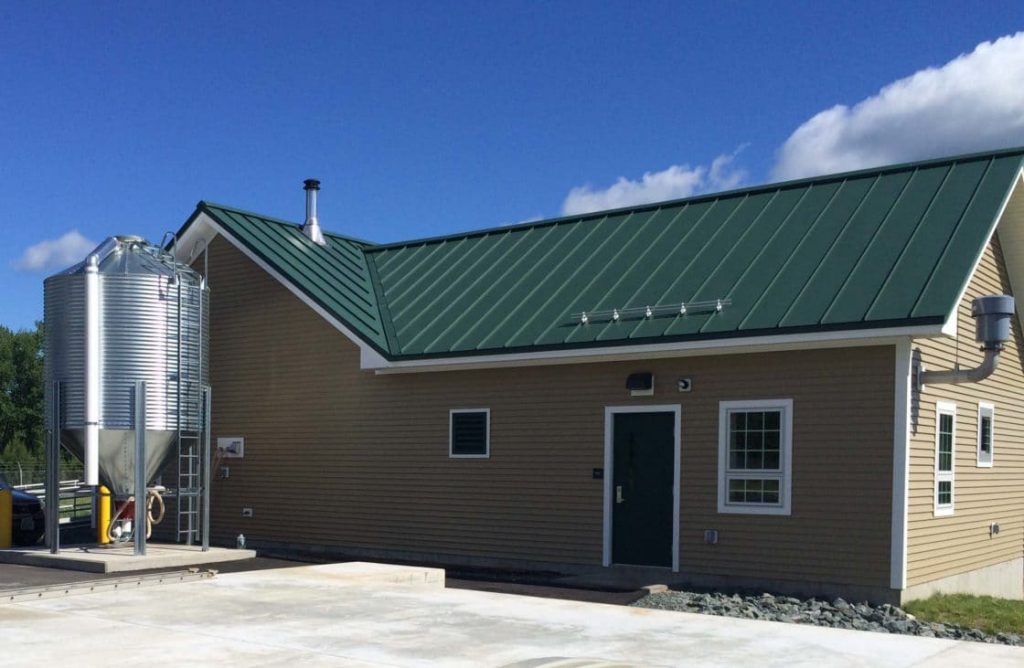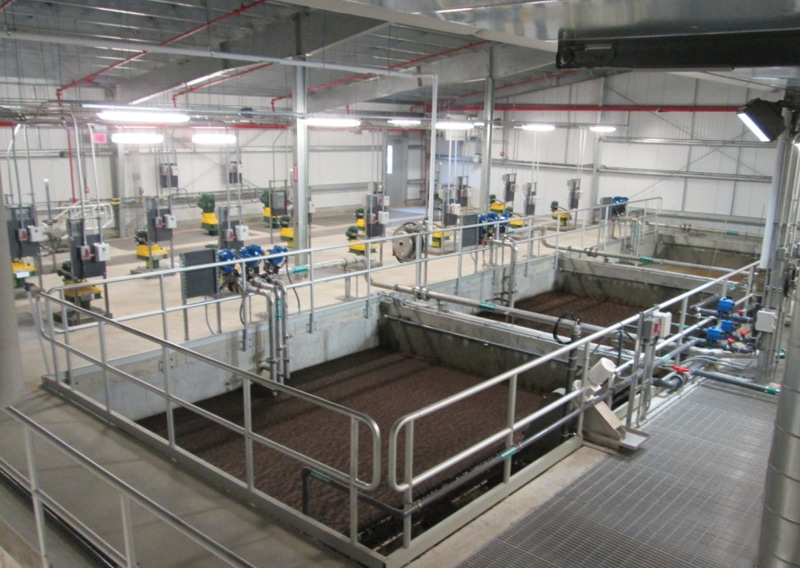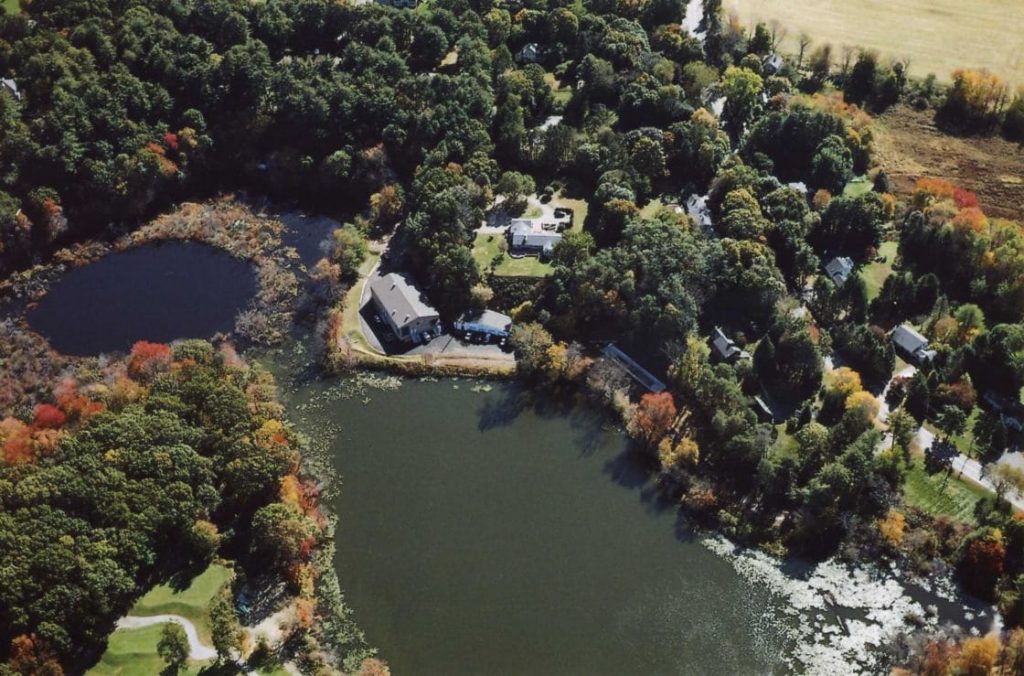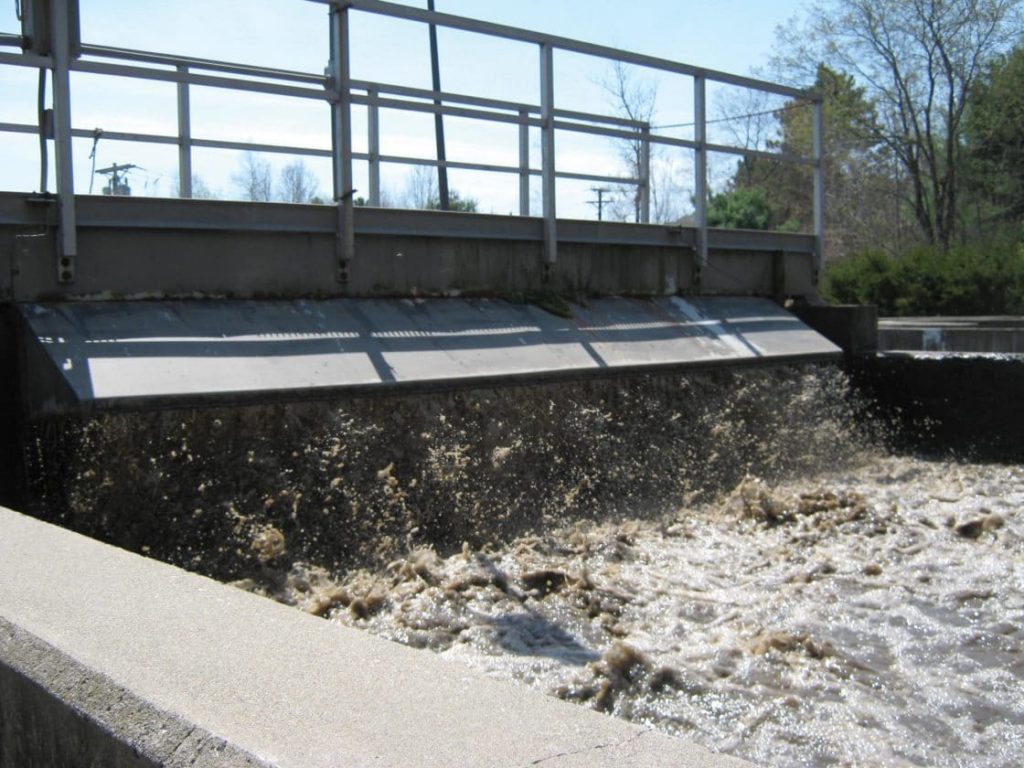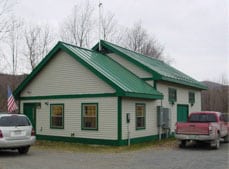 Tata & Howard designed and constructed the improvements to eliminate low and inadequate system pressures, construct a new source, pilot test filtration for manganese removal, design and construct required distribution system piping to connect the plant and storage tank with the system, design a new concrete storage tank, booster pump stations, and the filtration facility for manganese removal. The project was very successful and remains in great condition today.
Tata & Howard designed and constructed the improvements to eliminate low and inadequate system pressures, construct a new source, pilot test filtration for manganese removal, design and construct required distribution system piping to connect the plant and storage tank with the system, design a new concrete storage tank, booster pump stations, and the filtration facility for manganese removal. The project was very successful and remains in great condition today.
Services: Treatment
Water Treatment Plant with Dehumidification System, Whitinsville, MA
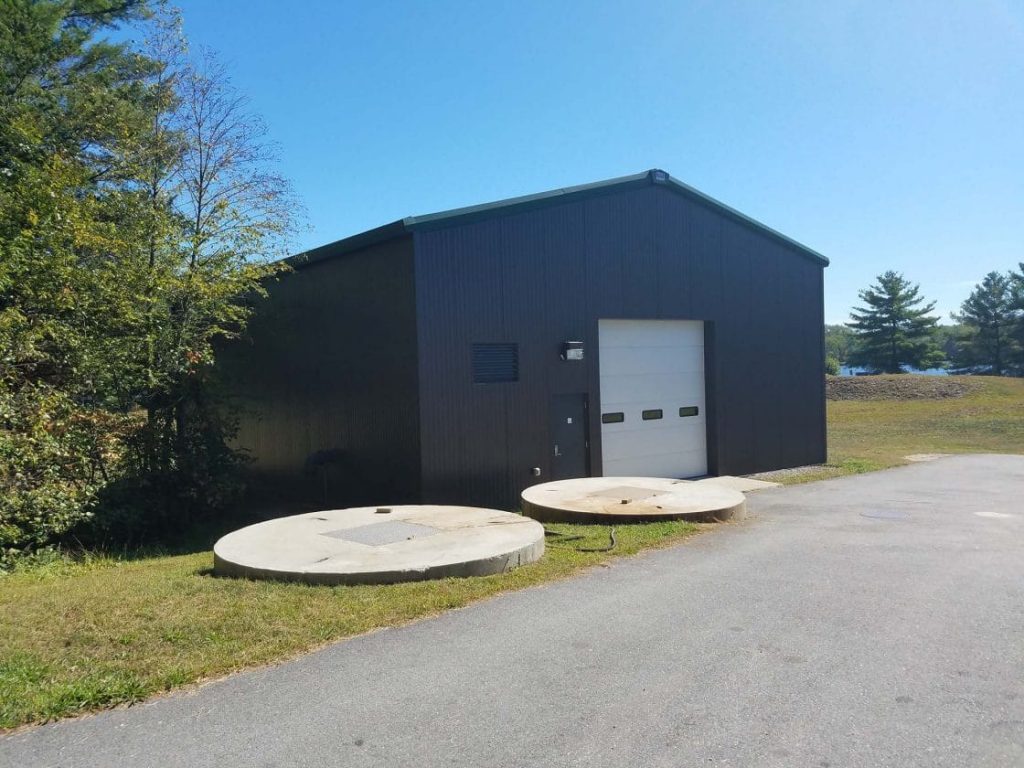
Tata & Howard provided the design of a 1.44 million gallon per day (mgd) water treatment plant to treat water from the Whitinsville Water Company’s Whitin Wellfield. The existing facilities consisted of a chemical injection facility and pump station, and historical high levels of iron and manganese led to water discoloration issues in the distribution system.
The new treatment facility for the Whitin Wellfield utilizes chlorine oxidation and GreensandPlus™ media filtration to remove iron and manganese from the raw water to concentrations below Secondary Maximum Contaminant Levels. The installation of 16-inch pipe between the existing facility and the water treatment facility is utilized in combination with filtration to provide contact time to achieve log removal of Giardia Lamblia (Giardia), Cryptosporidium, and viruses, if it becomes necessary in the future.
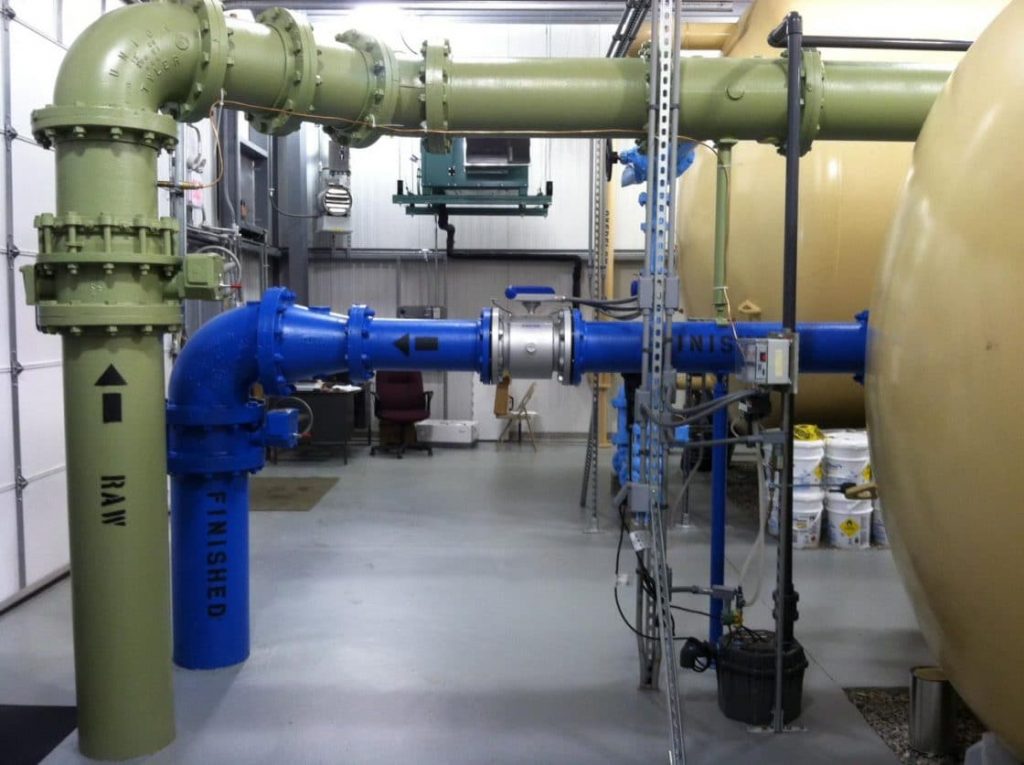
The treatment plant components include a three cell horizontal pressure filter vessel, a backwash water tank, and backwash pumping systems. The design also included a dehumidification system and the installation of crushed stone below the filter vessel and spent backwash tank. This allows for water to infiltrate into the ground and prevent puddling on the concrete floor in the event that condensation does occur on the equipment.
Treating Arsenic in Water in Arizona
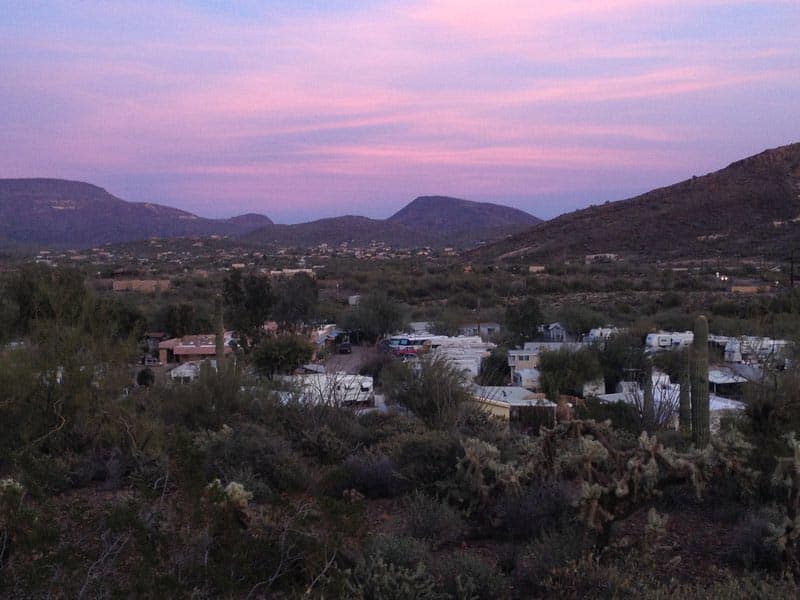
The Shangri La Ranch water supply, located in New River, Arizona, exceeded the running annual average maximum contaminant level (MCL) for arsenic. For the first quarter of 2015, the running annual average (RAA) was 0.0107 mg/L, and the RAA for the second quarter of 2015 was 0.0106 mg/L. The MCL for arsenic is 0.01 mg/L. Arsenic contamination within aquifers is not uncommon and is generally from natural mineral deposits. Arsenic in high enough concentrations can result in skin legions and damage to the circulatory system and cancer; therefore, it is important to monitor and minimize this contaminant from drinking water.
The Shangri La Ranch is a non-transient, non-community water system that services approximately 240 customers. The actual number of customers served varies and is dependent on the number of people that are visiting the resort during a given period of time. Tata & Howard prepared an Arsenic Treatment Report for the Arizona Department of Environmental Quality (ADEQ) to address arsenic levels in the Shangri La Ranch’s water supply. It included a summary of the existing layout and operation of the water supply wells, representative treatment provided, and recommendations for additional treatment to meet the State and Federal MCL for arsenic.
The results of the study indicated that the arsenic concentrations in Well No. 1 was low enough that blending from the existing wells would adequately reduce the arsenic concentration to below the MCL. It was also recommended that the system install two ISOLUX® cartridges, in parallel, to reduce the arsenic level in Well No. 4 to levels below the MCL prior to blending with the remaining water supplies. ISOLUX® utilizes a zirconium adsorption system to remove arsenic from water
Water System Improvements and Funding Assistance, VT
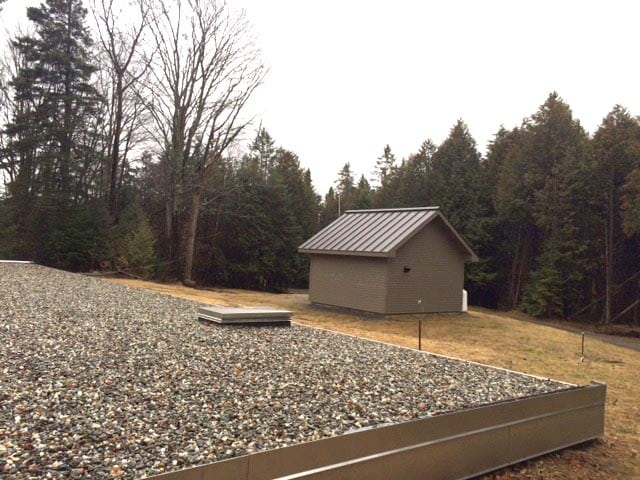
Greensboro Fire District No. 1 (GFD#1), situated on the Northern portion of the Green Mountains in Vermont, requested assistance with their water distribution and treatment systems due to deficiencies identified in a sanitary survey conducted by the State of Vermont. This contract addresses these deficiencies and provides the District a more robust covered water storage tank, secure buildings that house controls and chemicals and related equipment, emergency power generation, and water metering.
As part of the project, Tata & Howard helped GFD#1 secure funding that included a 45% USDA Grant for the originally planned project with an estimated budget of $2,900,000. During the design phase, the District lost their primary well source due to an extended drought. Tata & Howard engineers worked with the District to secure a 100% USDA grant for the cost of constructing a new municipal well source and associated emergency generator and related appurtenances.
Tata & Howard provided design, construction administration, and resident observation for the water system improvements project. Construction began in the spring of 2015 with the setup of a temporary water storage system and demolition of the existing water storage tank roof structure. Precast planks and a ballasted membrane roof were then installed, providing safe, quality water. Two new small buildings were constructed to house chemicals and water well piping and controls, along with an emergency generator to provide continuous water in case of interruption to electrical power.
Mountain Street Water Treatment Plant Valve Replacement
CLIENT: Northampton, Massachusetts
PROJECT: Mountain Street Water Treatment Plant Valve Replacement
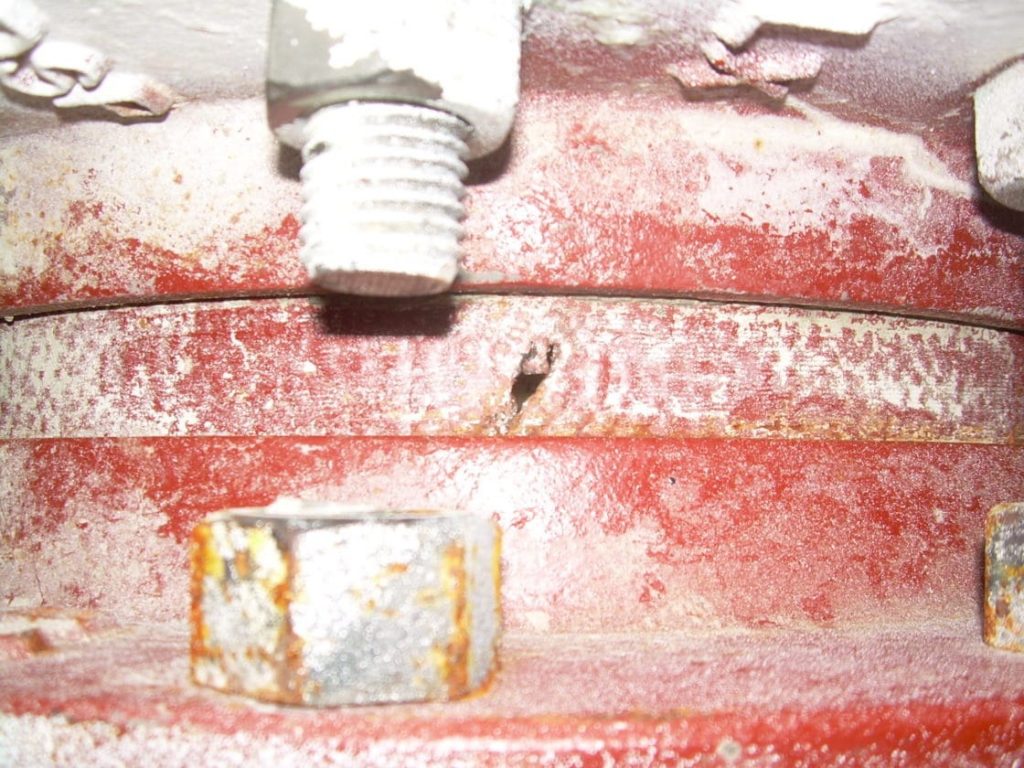
THE CHALLENGE: The three check valves on the clarifier influent feed lines were failing and, as a result, the disc was consistently hitting the downstream pipe spool piece, eventually causing each section to develop holes and leaks.
THE SOLUTION: Rather than simply replacing the check valves with the same style valve, we decided to dig deeper. We believed the discs were failing due to turbulence generated by an upstream modulating valve, so we researched alternative valves. We found that most alternative valves required a longer lay length than the existing check valves, which would have required replacement of the influent piping as well as reconfiguration of the valves and flow meters on each of the clarifier influents that feed the three units back to the header.
With additional research, we identified a flanged duckbill check valve that could actually be inserted between two flanges within the pipe, with the flange of the check valve sandwiched between the two flanges of the existing pipe configuration. The valve itself was located within the influent piping and allowed for installation without having to significantly alter the clarifier influent piping. As a result, the Owner saved on the cost of the valve replacement as well as avoided an extended shutdown time, as each clarifier would have been out of service for a far longer duration if extensive influent piping modifications were necessary.
PROGRESS: The project was successfully completed in October of 2014.
Shared Wastewater Treatment Facility, VT
CLIENT: The Towns of Canaan, VT and Stewartstown, NH
PROJECT: Shared Wastewater Treatment Facility
THE CHALLENGE: The existing wastewater treatment facility was 40 years old, costly to operate, and did not meet state and federal water quality standards. In addition, the Towns had very limited funds with which to upgrade the treatment facility.
THE SOLUTION: Tata & Howard helped the Towns secure a $2.412 million low-interest, long-term loan and $1.69 million in grant funds from the U.S. Department of Agriculture (USDA) Rural Development in order to build the new facility.
Tata & Howard, Inc. provided complete consulting engineering services for the construction of the wastewater treatment facility project which included the complete upgrade of four pump stations as well as the upgraded 0.185 mgd, 3-cell lagoon wastewater treatment facility. In addition, Tata & Howard’s St. Johnsbury, Vermont office, formerly Leach Engineering Consultants, provided full design services for all of the upgrades.
The Towns now enjoy a state-of-the-art, reliable wastewater treatment facility that meets the Effluent Discharge limits to the Connecticut River and provides for a more efficient treatment process. The new influent screening and grit removal processes extend the life of the treatment facility components. In addition, septage receiving provides for additional income and also provides service to the residents of the Towns that are not on public sewer.
The design included numerous energy-efficient features such as variable-frequency drives (VFDs) on aeration blowers, solar-powered lagoon mixers, a wood pellet boiler for heat, energy-efficient windows, and insulated concrete form (ICF) walls, resulting in a reduction in annual operation and maintenance costs. The pump stations were upgraded to eliminate operators entering below grade structures and to allow for future pump replacement that would be lower cost with it would be with the original centrifugal pumps.
PROGRESS: The project is complete, and the Towns celebrated the completion of their shared $4.12 million wastewater treatment facility with a ribbon-cutting ceremony in Canaan, VT.
8.4 mgd Water Treatment Plant Design, Permitting, Construction Administration, Falmouth, MA
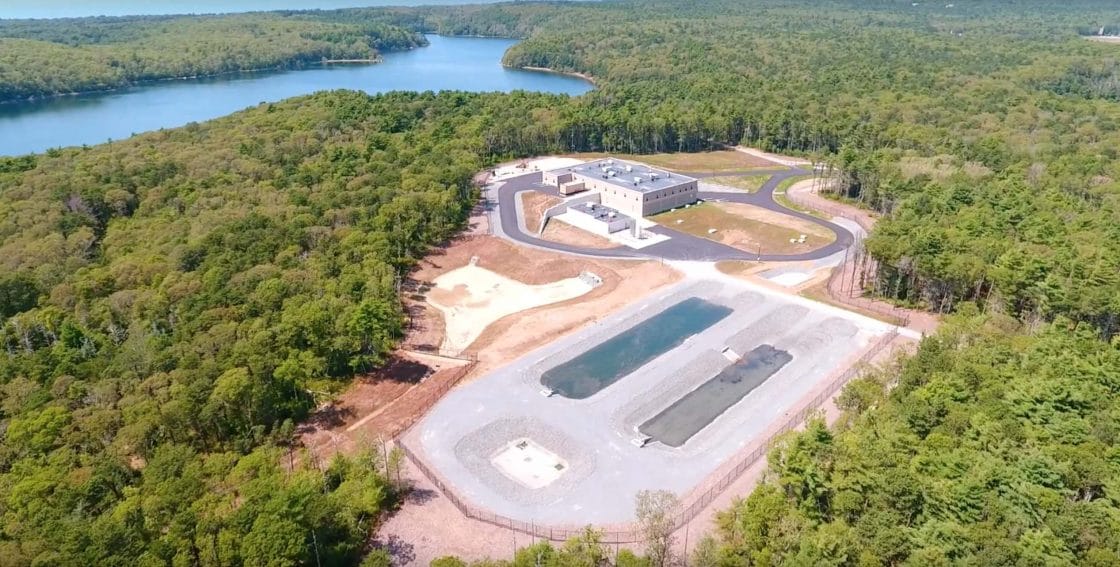
THE CHALLENGE: More stringent USEPA and MassDEP regulations, including Stage 2 Disinfectants/Disinfection-by-Product Rule (S2 D/DBPR) and the Long Term 2 Enhanced Surface Water Treatment Rule (LT2ESWTR), resulted in the Town of Falmouth needing to make a decision on whether to construct a filtration facility in compliance with the SWTR or to upgrade disinfection processes only at the existing Long Pond Water Treatment Facility (LPWTF) to maintain the existing Filtration Waiver.
THE SOLUTION: Because the existing LPWTF utilized no filtration to remove bacteria, organics, and particulates, the water quality entering the distribution system was an ongoing concern with elevated turbidity and organics leading to seasonal color, taste, and odor complaints; elevated bacteria and concentrations; and elevated algae counts. In addition, the high doses of chlorine needed to maintain the disinfection residuals required for an unfiltered supply reacted with the organics in the raw water to form disinfection by-products. Therefore, the only viable option for the Town of Falmouth was a new water treatment plant. After evaluating 22 treatment processes and developing eight treatment alternatives for pilot testing, only one treatment process met all goals: Dissolved Air Flotation (DAF) clarification, intermediate ozone followed by filtration. This alternative also scored favorably on the benefit/cost analysis.
Tata & Howard provided design and construction services for the new Dissolved Air Flotation (DAF) facility with a design capacity of 8.4 million gallons per day (mgd) for the Long Pond surface water supply for the Town of Falmouth, MA. The water treatment plant (WTP) utilizes coagulation, mixing, flocculation, dissolved air flotation (DAF), dual media filtration including granular activated carbon (GAC) above sand, chemical feed systems, and an intermediate ozone feed. Building components include HVAC, plumbing, fire sprinkler, gas and electrical services. Other work included site work with exterior piping systems, exterior above and below ground tanks, sludge holding lagoons, construction of a garage, new raw water intake and pump station, directional drilling of raw water mains, and demolition of equipment and site piping at the existing water treatment facility.
As part of the project, Tata & Howard provided design and permitting of a new 8.4 mgd intake and raw water pump station (RWPS) for the WTP. The new intake and RWPS were constructed along the eastern shore of Long Pond and replaces the existing intake and Low Lift Pump Station. The new intake and RWPS includes a two-level intake consisting of two 8.4 mgd rated intake screens installed at elevations -3 feet below mean sea level (MSL) and -13 feet below MSL. The 36-inch HDPE intake pipeline connects the intake screens to the new RWPS located approximately 150 feet from the eastern shore of Long Pond. An air burst system was designed in the RWPS to provide a means for routine cleaning of the new intake screens.
An accelerated 11 month design and permitting schedule, followed by contractor prequalification, bidding, and award, were completed in time to qualify the Town for >$3M in principal forgiveness.
Design included the following:
• 300 Drawings
• 1,200 pages of Specifications
• SRF PEF application
• Monthly project meetings
• Coordination with Building Department
• Coordination with Board of Health
• Coordination with Town IT Department
• Coordination with Police and Fire Departments
• Coordination with Gas and Electric Utilities
Permits included the following:
• Wetlands Protection Act-Local Conservation Commission
• Board of Health
• Remediation General Permit (NPDES)
• Massachusetts General Permit
• Environmental Notification Form
• Massachusetts Historical Commission: Intensive Archaeological Survey including 200 test holes
• MassDEP Approval to Construct WTP: BRP WS 24
• DWSRF PAC
• 401 Water Quality Certification
• NHESP – Turtle Protection Plan
• Chapter 91 Waterways License
• U.S. Army Corps of Engineers General Permit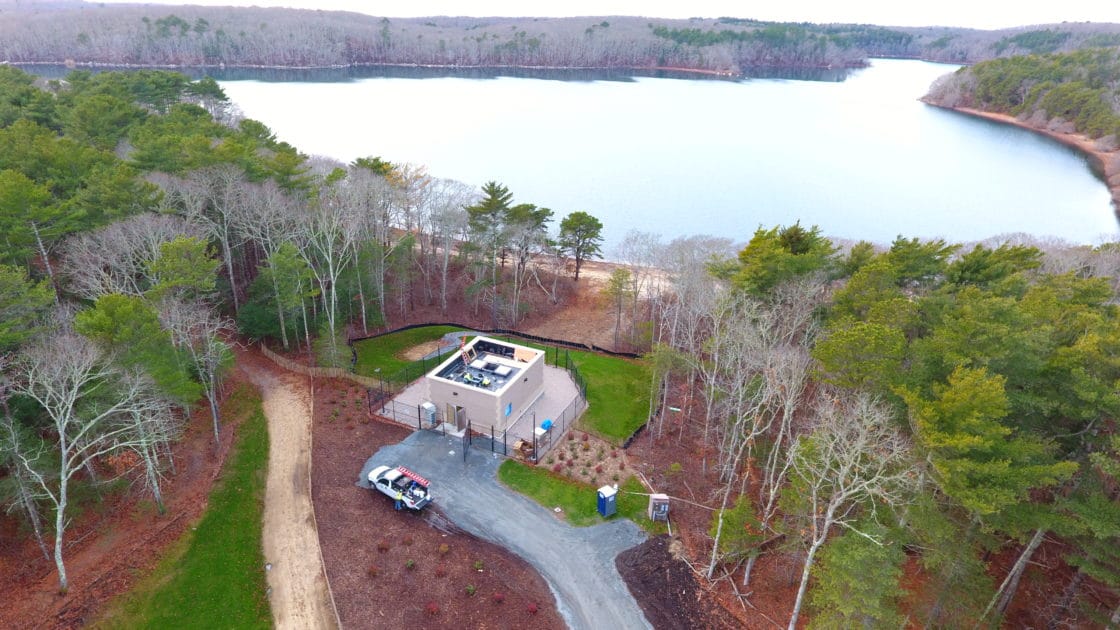 The construction of the Long Pond Water Treatment Plant progressed on schedule and was completed in 2017. The plant included numerous sustainability and energy efficiency initiatives including the following:
The construction of the Long Pond Water Treatment Plant progressed on schedule and was completed in 2017. The plant included numerous sustainability and energy efficiency initiatives including the following:
- Recycling spent backwash water to head of plant and back into the treatment process, after it passes through a plate settler to remove solids.
- Recycling laboratory analyzer and filter influent piping gallery analyzer discharges back into the treatment process.
- Using filter-to-waste water after a filter backwash sequence as supply water for the next backwash, instead of using finished water for backwashing.
- Discharging cleaner supernatant water off the top of the lined lagoons to an unlined infiltration lagoon and back into the ground to minimize residuals.
- Use of local/native plants for landscaping, including an irrigation system using collected rainwater from roof drainage.
- Interior and exterior LED lighting fixtures.
- Variable Frequency Drives (VFDs) on HVAC equipment and process equipment motors.
The plant went online on October 18, 2017. The work was funded under the SRF program. The Long Pond Water Treatment Plant received an ENR New England 2017 Best Project Award in the Water/Environment category, and an Associated Builders & Contractors of Massachusetts Eagle Award in the Public Works – Environmental category.
For a drone video of the new water treatment plant taken by the general contractor, Methuen Construction, please see below:
Milford Water Treatment Facility, Milford, MA
Tata & Howard provided construction administration, resident observation, and start-up services to the Milford Water Company for the construction of the Dilla Street Water Treatment Facility. The 5.2 mgd facility treats water from a combination of lake, river, and wells, utilizing dissolved air flotation (DAF) clarifiers and granular activated carbon (GAC) filters. The facility will replace the existing slow-sand and diatomaceous earth (DE) treatment currently utilized to treat the existing surface and groundwater sources, respectively. The facility was required to address and satisfy an Administrative Consent Order (ACO) issued by MassDEP.
Tata & Howard also completed design and oversight of a redundant cast-in-place chlorine contact tank, and has been contracted to provide engineering services for project review and construction oversight for the installation of raw water screens on intakes of both the lake and river sources. These improvements were mandated by MassDEP as part of the approval of the Dilla Street facility design.
Water Treatment Plant, Iron and Manganese Removal, Wayland, MA
Tata & Howard completed pilot testing, design, permitting, bidding, and construction management services for the Town of Wayland’s Baldwin Pond Water Treatment Plant which included iron and manganese removal. The facility received MassDEP approval to go online and became Wayland’s first public building to receive an occupancy permit in the last 30 years. The need for the facility arose from high iron and manganese content in Wayland’s water. The facility also addressed any concern over the three Baldwin Pond wells which were under close scrutiny to determine if they were “under the influence of surface water.” The 7,500-square-foot, 1.5 million gallons per day, state-of-the-art water treatment facility was constructed to meet current and future regulations for many years ahead. The design included ozone oxidation, ultrafiltration membranes, waste recycle, and chemical feed for coagulation, pH adjustment, fluoridation, and disinfection. The treatment facility utilizes ozone oxidation and ultrafiltration to remove iron and manganese from the blended raw water from the three water supply wells. Although other constituents are also removed through this process, the basis of this plant is to optimize the removal of iron and manganese.
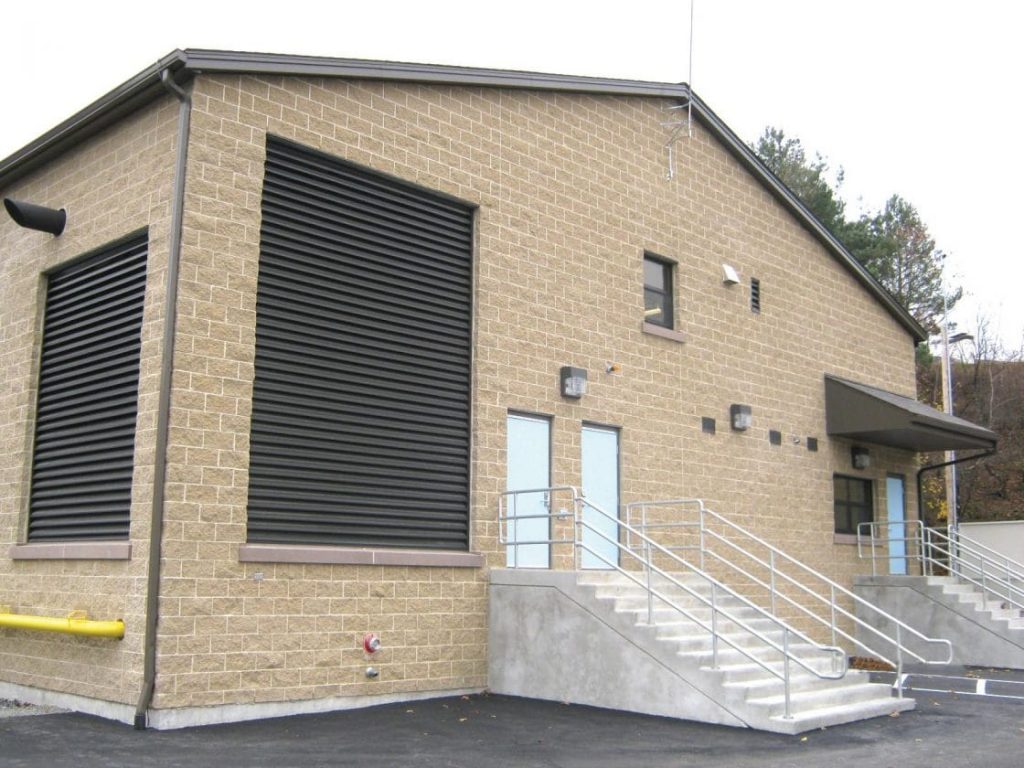
The Baldwin Pond Water Treatment Facility project was highly successful through good communication and teamwork between Tata & Howard’s construction management team, the general contractor Methuen Construction, and the Town of Wayland. With less than 1% of the contingency budget applied to change orders towards the end of the project, the Town was able to do additional work. The additional work included replacing raw water mains and upgrading the existing garage onsite. A dedication ceremony for the facility was held with Representative Scott Brown, and representatives from MassDEP, Methuen Construction, and Tata & Howard joining the Town of Wayland in commemorating the completion of the facility.
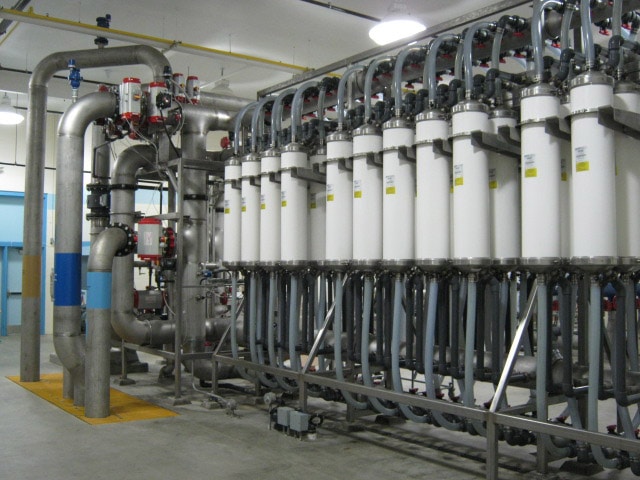
CMOM Requirements in NPDES General Permit, Winchester, NH
Tata & Howard assisted the Town of Winchester to meet the Collection, Management, Operation, and Maintenance (CMOM) requirements in the Town’s NPDES General Permit. The work consisted of the preparation of an outline for the Full Collection System Operation and Maintenance Plan, which included descriptions of staffing, management goals, information management, condition assessment, recent studies, and construction activities. Tata & Howard was also retained to prepare the Full Collection System Operation and Maintenance Manual, which included updating the outline, preparing a preventative maintenance and monitoring program, identifying sources of suspected overflows and back-ups, preparing a program for preventing I/I related effluent violations, and a public outreach program regarding I/I control.
Additionally, Tata & Howard has assisted the Town of Winchester with three phases of improvements to the Winchester Wastewater Treatment Facility (WWTF), I/I investigations, repair and rehabilitation of the sewer collection system to remove I/I, and securing funding to upgrade the WWTF and sewer collection system.

